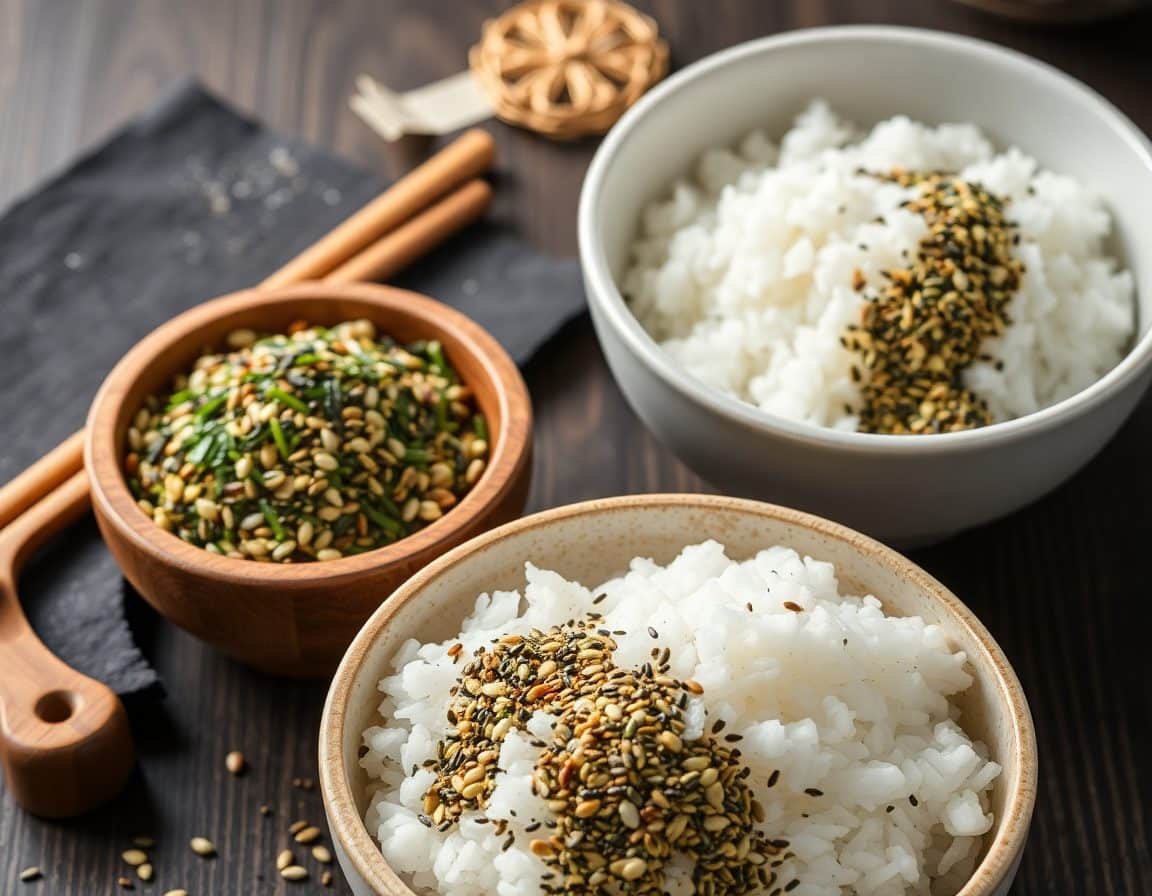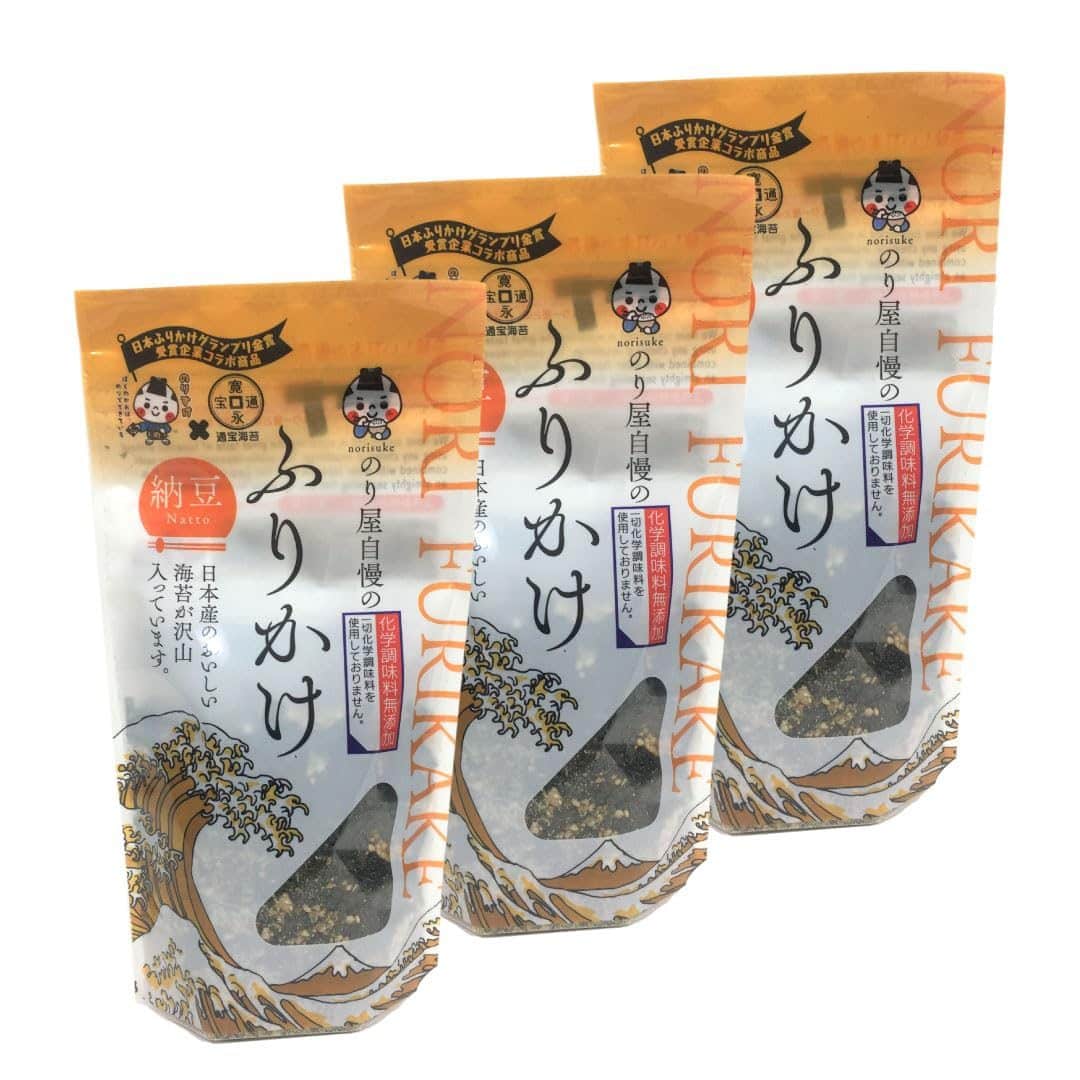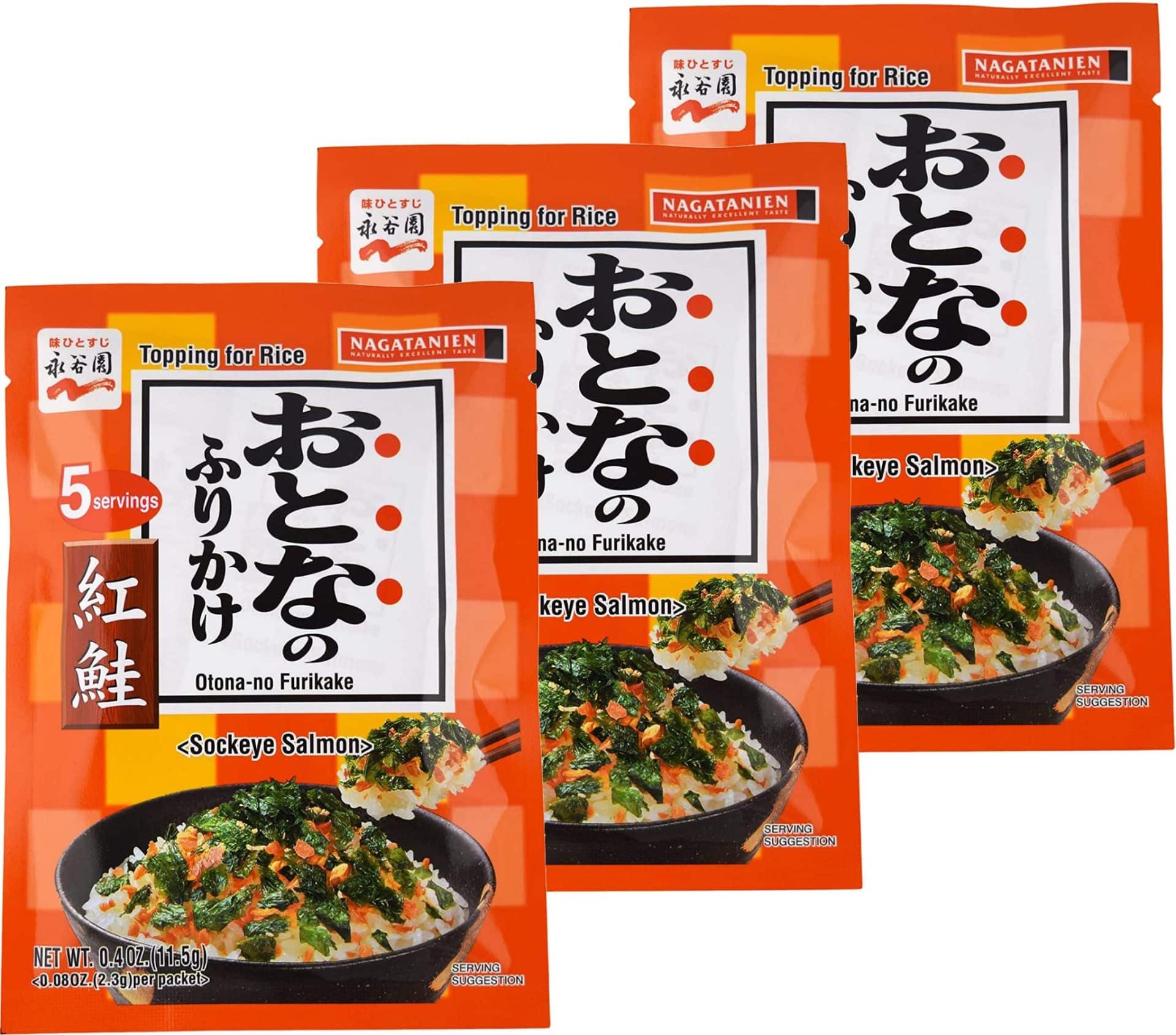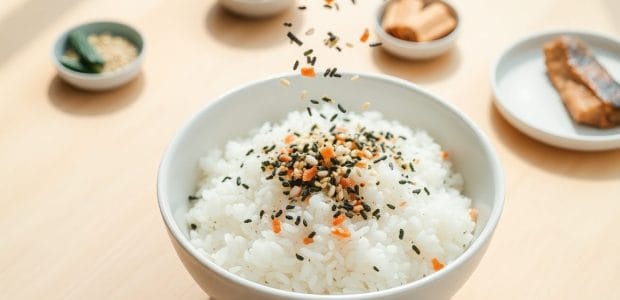Discover the nutritional profile of this popular Japanese rice seasoning and learn whether it deserves a place in your healthy diet.
What is Furikake? Understanding This Popular Japanese Condiment
Furikake (pronounced foo-ree-kah-keh) is a dry Japanese seasoning typically sprinkled on top of cooked rice, vegetables, and fish. This flavorful condiment has gained popularity worldwide as more people discover Japanese cuisine beyond sushi and ramen. The word “furikake” comes from the Japanese verb “furikakeru,” which means “to sprinkle over.”
In Japanese culinary tradition, furikake belongs to the category of tsukudani (preserved foods) and shares similarities with other rice seasonings like gomashio (sesame salt) and shichimi togarashi (seven-spice blend). It’s considered an essential component in bento boxes and everyday washoku (traditional Japanese cuisine) meals where it adds both flavor and nutritional value.
But as this savory seasoning finds its way into more Western kitchens, health-conscious consumers are asking an important question: is furikake healthy?
Traditional Furikake Ingredients
Traditional furikake typically consists of a mixture of dried fish (often katsuobushi or bonito flakes), sesame seeds, chopped seaweed (nori or aonori), salt, and sugar. This original formulation was created in the early 20th century by pharmacist Suekichi Yoshimaru as a calcium supplement called Gohan no Tomo (“Friend of Rice”) to address calcium deficiencies in the Japanese population by incorporating small dried fish with edible bones. Its development parallels other nutritional innovations during Japan’s Meiji and Taisho periods when Western nutritional science was being integrated into Japanese dietary practices.
The basic ingredients in traditional furikake include:
- Dried fish (katsuobushi/bonito flakes, sardines, or salmon)
- Toasted sesame seeds
- Nori seaweed
- Salt
- Sugar
- MSG (in some varieties)
Modern Variations and Commercial Brands
Today’s commercial furikake has evolved to include numerous varieties and flavor profiles. Modern versions might contain:
- Egg granules
- Dried vegetables
- Wasabi
- Shiso (perilla) leaf
- Miso powder
- Shrimp or other seafood
- Dehydrated soy sauce
- Preservatives and flavor enhancers
Many commercial brands available in the United States and globally have adapted to Western tastes, sometimes adding more salt, sugar, or artificial ingredients than their traditional counterparts. This evolution makes it especially important to understand what’s in your furikake before determining if it’s a healthy choice for your diet.

Nutritional Composition of Furikake
The nutritional profile of furikake varies significantly depending on the specific variety and brand. However, we can examine the general nutritional composition to help answer the question: is furikake healthy?
Macronutrients in Common Furikake Types
A typical 2.5-gram serving (approximately 1 teaspoon) of traditional nori-based furikake contains:
- Calories: 5-15 calories
- Protein: 0.5-1 gram
- Carbohydrates: 0.5-1 gram
- Fat: 0.2-0.5 grams (primarily from sesame seeds)
- Fiber: 0.1-0.3 grams
This makes furikake a relatively low-calorie seasoning option, especially when used in recommended serving sizes. The protein content, while small in absolute terms, is notable for a condiment and comes primarily from the dried fish ingredients.
Vitamins and Minerals Present
Furikake can provide several important micronutrients, particularly:
- Calcium: From small dried fish with bones
- Iodine: From seaweed components
- Iron: From nori and other seaweed varieties
- B vitamins: Particularly B12 from fish components
- Omega-3 fatty acids: In fish-based varieties
The mineral content is one of the most nutritionally significant aspects of furikake, with traditional varieties developed specifically to address nutritional deficiencies. The seaweed components, in particular, provide minerals that can be difficult to obtain from other food sources.
Caloric Content
With typical serving sizes ranging from 1/2 to 1 teaspoon (approximately 2.5-5 grams), furikake adds minimal calories to meals while providing significant flavor enhancement. This makes it an excellent option for those looking to add taste without substantially increasing caloric intake.
However, the true caloric impact depends on serving size—some enthusiastic consumers may use more than the recommended amount, which should be considered when evaluating furikake’s place in a balanced diet.

Is Furikake Healthy? Analyzing The Pros
When analyzing whether furikake is healthy, several nutritional benefits stand out that make this Japanese seasoning a potentially beneficial addition to a balanced diet.
Potential Health Benefits of Seaweed in Furikake
The seaweed in furikake (typically nori or Porphyra species) offers several health advantages:
- Rich in iodine: Essential for thyroid function and metabolism regulation
- Contains beneficial compounds: Different seaweed varieties contain different beneficial compounds – brown seaweeds (if included) contain fucoxanthin with potential anti-inflammatory properties
- Provides dietary fiber: Supporting digestive health through alginates and other soluble fibers despite the small serving size
- Contains antioxidants: Including various polyphenolic compounds that help combat oxidative stress
- Contains trace minerals: Provides minerals that can be difficult to obtain from other food sources
Research from the Journal of Applied Phycology and epidemiological studies on Japanese dietary patterns have found correlations between regular seaweed consumption and lower rates of certain chronic diseases in populations that regularly consume it. The Okinawan diet, known for promoting longevity, traditionally includes seaweed as one of many beneficial dietary components. It’s important to note that these are correlations rather than proven causation, as many factors contribute to Japanese longevity including overall diet, lifestyle, healthcare access, and genetics.
Protein Sources in Fish-Based Varieties
Fish-based furikake varieties offer concentrated protein benefits:
- Complete protein: Containing all essential amino acids
- Bioavailable protein: Easily digested and absorbed by the body
- Sustainable protein source: Providing nutrition in small, efficient portions
While the absolute protein amount is small per serving, the regular addition of fish-based furikake to daily rice consumption can contribute meaningfully to overall protein intake, particularly in predominantly plant-based diets.
Essential Minerals and Nutrients
Traditional furikake was specifically designed as a calcium supplement for the Japanese population, and it continues to provide valuable nutrients:
- Calcium: Supporting bone health from fish bones
- Iron: Contributing to healthy blood from seaweed components
- Zinc: Supporting immune function from seafood ingredients
- Selenium: Providing antioxidant benefits from fish components
These minerals are particularly valuable because they come from whole-food sources rather than synthetic supplements, potentially offering better bioavailability and additional cofactors that enhance absorption.

Health Concerns With Furikake Consumption
While furikake offers several nutritional benefits, there are also potential health concerns to consider when evaluating the question: is furikake healthy?
Sodium Content and Heart Health
One of the primary health concerns with furikake is its sodium content:
- Many commercial varieties contain between 200-400mg of sodium per teaspoon
- Some flavored varieties may contain even higher sodium levels
- Daily sodium intake should be limited to 2,300mg for most adults (and 1,500mg for those with hypertension or heart concerns)
For individuals monitoring their sodium intake due to hypertension, heart disease, or kidney issues, the salt content in furikake should be carefully considered. Some brands now offer reduced-sodium options, which can be a better choice for those with sodium restrictions.
Additives and Preservatives to Watch For
Commercial furikake often contains additives that health-conscious consumers may wish to avoid:
- MSG (monosodium glutamate): While generally recognized as safe by the FDA, some individuals report sensitivity
- Artificial colors: Including Yellow #5 and Yellow #6 in some varieties
- Preservatives: BHA and BHT appear in some commercial formulations
- Added sugars: Contributing to the overall sugar content in the diet
Reading ingredient labels carefully is essential for those looking to avoid these additives. Organic and traditional Japanese brands often contain fewer artificial ingredients than mainstream American varieties.
Allergen Considerations
Furikake commonly contains several major allergens:
- Fish and shellfish: Present in most traditional varieties
- Sesame: A common ingredient and now recognized as a major allergen
- Egg: Found in tamago (egg) furikake varieties
- Soy: Present in some varieties through soy sauce or other soy-based ingredients
Individuals with these food allergies should be particularly careful when selecting furikake, as cross-contamination may occur even in varieties that don’t explicitly list these ingredients.

Store-Bought vs. Homemade: Which is Healthier?
When considering is furikake healthy, the source and preparation method significantly impact its nutritional value.
Reading Labels on Commercial Furikake
When shopping for store-bought furikake, consider these factors to make healthier choices:
- Sodium content: Look for options with less than 200mg per serving
- Ingredient list length: Generally, shorter lists indicate fewer additives
- Added sugars: Check for multiple sugar sources or high placement on the ingredient list
- Artificial additives: Avoid varieties with artificial colors, flavors, or preservatives
- MSG: If you’re sensitive, check specifically for “No MSG” labeling
Some health-focused brands now offer organic, preservative-free, or reduced-sodium furikake options that provide better nutritional profiles than conventional varieties.
Benefits of Making Your Own Furikake
Homemade furikake offers several advantages over commercial versions:
- Control over ingredients: Customize based on dietary needs and preferences
- Sodium management: Adjust salt levels to suit health requirements
- Fresher ingredients: Often providing more vibrant flavors and potentially greater nutritional value
- No preservatives or additives: Eliminating artificial ingredients entirely
- Cost-effectiveness: Potentially more economical, especially if you regularly consume furikake
Basic homemade furikake can be prepared by combining toasted sesame seeds, small pieces of nori seaweed, a small amount of salt, and bonito flakes. Additional ingredients like shiso leaves, yuzu zest, or dried shiitake can add variety without compromising nutritional quality.
How to Include Furikake in a Balanced Diet
Furikake can be a healthy addition to your diet when used thoughtfully as part of an overall balanced eating pattern such as the Mediterranean diet, DASH diet, or traditional Japanese washoku approach to eating that emphasizes variety, seasonality, and moderation.
Recommended Serving Sizes
To enjoy furikake’s benefits while minimizing potential drawbacks:
- Start with 1/2 to 1 teaspoon (2.5-5g) per serving
- Limit to 1-2 servings daily if sodium intake is a concern
- Consider furikake as a flavor enhancer rather than a main ingredient
- Use less when combining with other salty seasonings or foods
The concentrated flavor of furikake means a little goes a long way, allowing you to enjoy its taste without excessive consumption of sodium or additives.
Healthy Meal Ideas Using Furikake
Furikake can enhance numerous healthy dishes beyond traditional gohan (cooked rice) applications:
- Protein bowls: Sprinkle over ancient grains like quinoa or farro with vegetables and lean protein for a macronutrient-balanced meal
- Avocado toast: Add texture and umami flavor to this monounsaturated fat-rich breakfast
- Roasted vegetables: Enhance cruciferous vegetables like cauliflower and broccoli or beta-carotene-rich sweet potatoes
- Salads: Use as a flavor-packed topping in place of croutons or excess dressing in nutrient-dense green salads
- Hard-boiled eggs: Sprinkle lightly for a complete protein and choline-rich snack
- Homemade popcorn: Create a savory snack with minimal added oil for a whole grain alternative to processed snacks
- Ochazuke: Try this traditional Japanese dish of green tea poured over rice topped with furikake for a hydrating, antioxidant-rich light meal
These applications allow you to enjoy furikake’s flavor and nutritional benefits while incorporating it into a nutrient-dense diet aligned with principles of functional nutrition and food synergy, where combinations of foods provide greater health benefits than individual components alone.
Conclusion: Making Informed Choices About Furikake
So, is furikake healthy? The answer is nuanced and depends largely on the specific variety, brand, and how it’s used in your overall dietary pattern.
Traditional furikake can be a nutritious addition to a balanced diet, offering valuable minerals, protein, and flavor with minimal calories. The seaweed components provide unique nutrients that are often lacking in Western dietary patterns, while the concentrated umami flavor can help reduce the need for excess salt or fat in meals through the principle of flavor layering.
However, commercially prepared varieties—especially those formulated for Western markets—may contain concerning levels of sodium, preservatives, and additives that diminish their health benefits. For the most nutritional value, consider:
- Choosing traditional Japanese brands with minimal ingredients that align with clean eating principles
- Looking for reduced-sodium or no-MSG varieties certified by organizations like the Non-GMO Project or USDA Organic
- Making your own furikake at home for complete control over ingredients, following whole food approaches
- Using moderate portions as a flavor enhancer rather than a main component, adhering to mindful eating practices
When used thoughtfully, furikake exemplifies the Japanese concept of “washoku” (harmonious food) that UNESCO recognized as an Intangible Cultural Heritage in 2013. It can be a flavorful tool for enhancing healthy meals while providing nutritional benefits that extend beyond what most condiments offer. By understanding its composition and making informed choices about varieties and serving sizes, you can enjoy this traditional Japanese seasoning as part of a health-supporting diet that bridges Eastern culinary wisdom with contemporary nutritional science.

